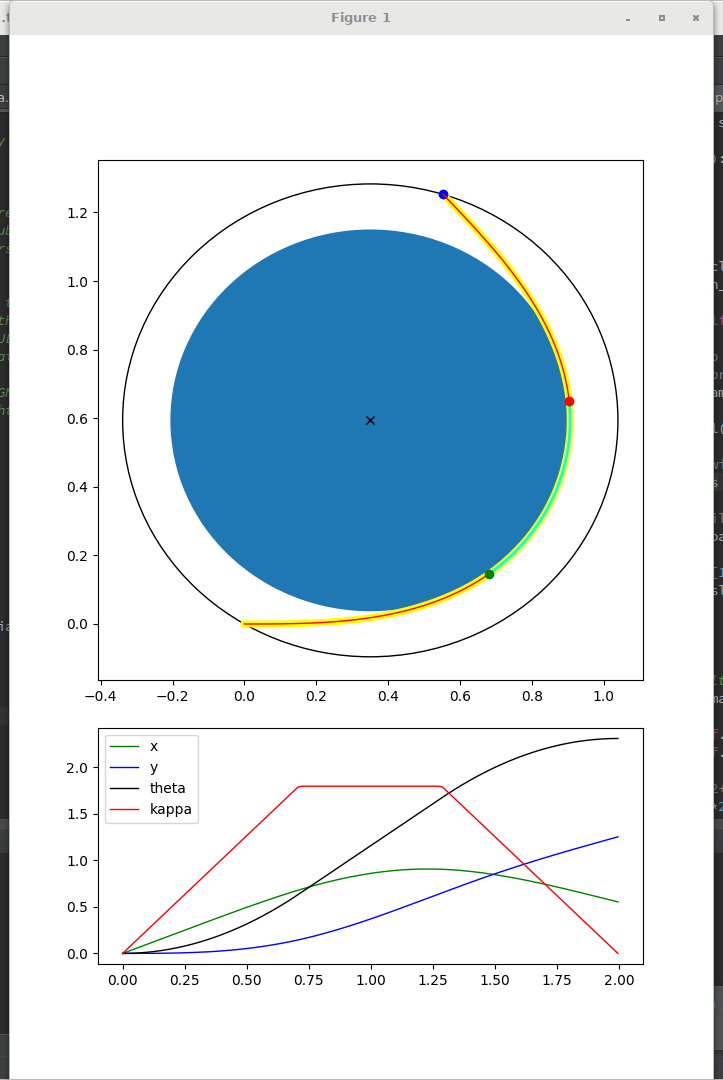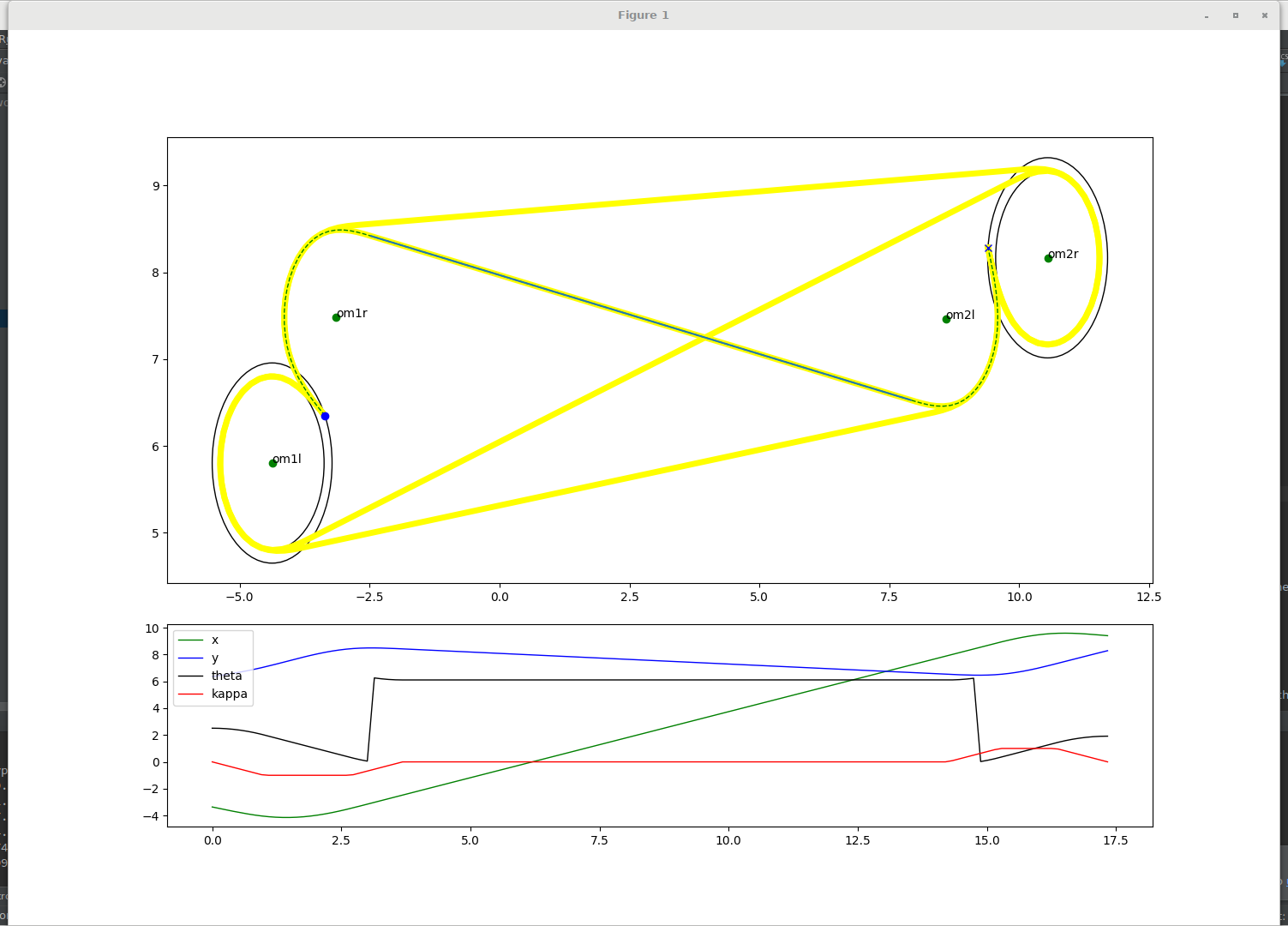Simple Continuous Curvature Path Library in Python
This library implements the calculation of simple continuous curvature paths as described by the paper of Scheuer and Fraichard in python:
@inproceedings{scheuer1997continuous,
title={Continuous-curvature path planning for car-like vehicles},
author={Scheuer, Alexis and Fraichard, Thierry},
booktitle={Intelligent Robots and Systems, 1997. IROS'97., Proceedings of the 1997 IEEE/RSJ International Conference on},
volume={2},
pages={997--1003},
year={1997},
organization={IEEE}
}
License
GPLv3 - please contact me if you need the software under a different license.
Example use - single Turn
input
kappa_max = Max curvature == 1/r of the inner curve radius r
sigma_max = The steering rate, i.e., the sharpness of the turn
output
Static Turn info:
Turn.len = Length of the complete turn
Turn.len_of_circular_part
Turn.state_qg = Endpoint of the turn
State: (sequence of trajectory points)
x, y = positions
theta = angle
kappa = curvature == 1/r of the curve radius
use
import numpy as np
from scc.turn import Turn
from scc.turnparams import TurnParams
# set parameters:
tparam = TurnParams(_kappa_max=1.8,
_sigma_max=1.0)
# setup a single turn:
turn = Turn(_params=tparam, _delta=math.pi*0.76)
# calculate a set of trajectory points:
XT = np.linspace(0, turn.len, 128, endpoint=True)
tra = turn.state(XT)
print (tra.x)
print (tra.y)Or more complete: plot_curve.py
Example use - Scc Path
import numpy as np
from scc.turn import Turn
from scc.turnparams import TurnParams
# set parameters:
pos1 = State(_x=-3.0, _y=6.4, _theta=math.pi*0.7, _kappa=0)
pos1 = State(_x=10.0, _y=8.2, _theta=math.pi*0.55, _kappa=0)
tparam = TurnParams(_kappa_max=1.8,
_sigma_max=1.0)
PATHOPTIONS = [PathType.lsl, PathType.rsr, PathType.rsl, PathType.lsr]
paths = [SccPathVariant(tparam, pos1, pos2, variant) for variant in
PATHOPTIONS]
shortest_path = min(paths, key=lambda path: path.len)
# calculate positions:
X = np.linspace(0, shortest_path.len, 128, endpoint=True)
tra = shortest_path.state(X)
print (tra.x)
print (tra.y)Or more complete: plot_path.py
TODOs
- improve documentation
- Add support for the case of: om12_dist <= 2 * self.params.outer_rad. I.e., when the centers of the two circles are very close together! (PathType.lrl, PathType.rlr)
- Add unit tests
- add setup.py to install via pip

